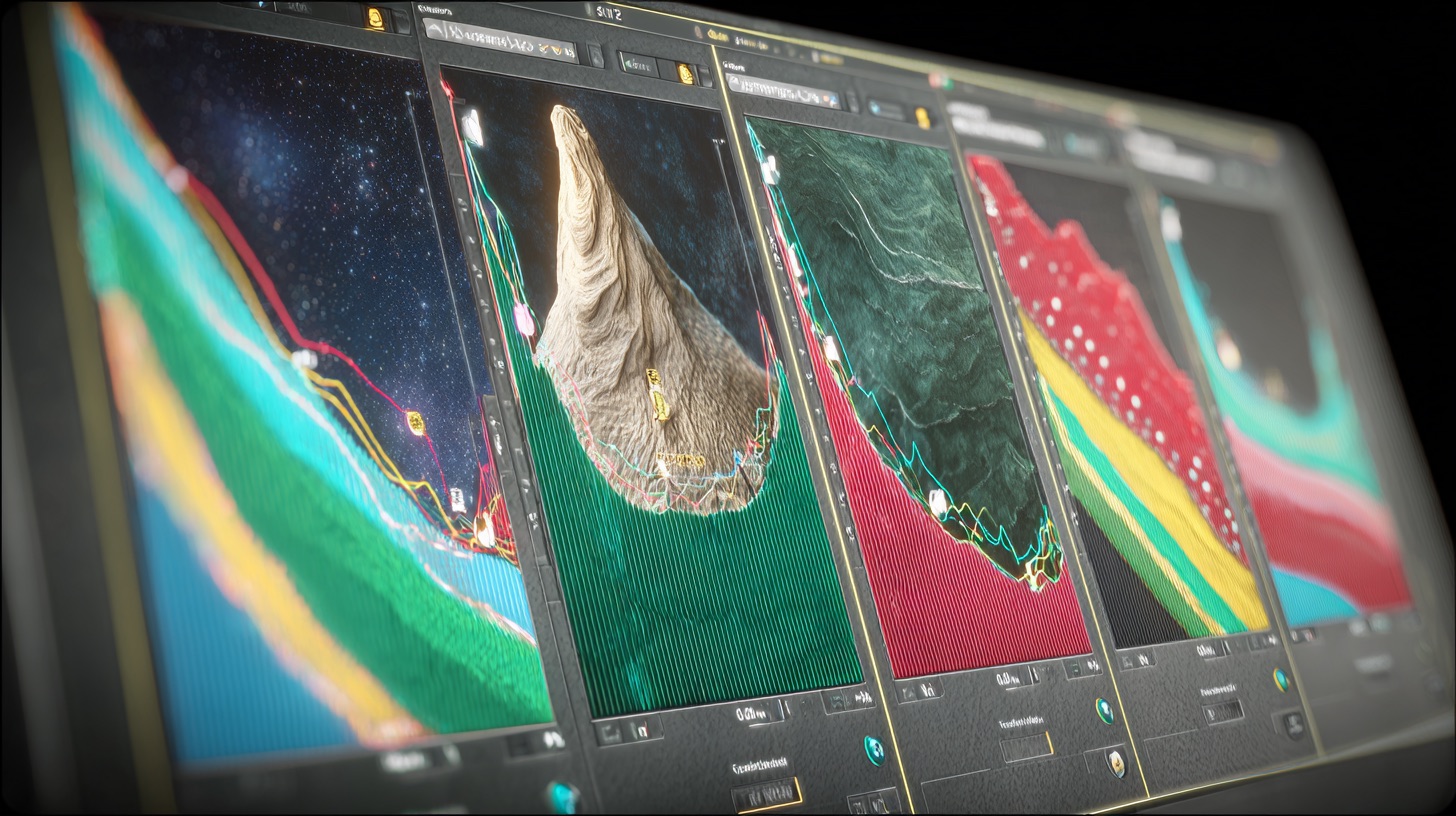
Kick Drum EQ for Modern Metal Mixes
Nail The Mix Staff
In modern metal, the kick drum isn't just a timekeeper. It's a weapon. It’s the driving force that locks in with down-tuned guitars to create that chest-thumping, gut-punching foundation we all crave. But getting it to hit that hard in a dense mix is a massive challenge.
We’ve all heard it go wrong. Kicks that sound like a plastic tub being tapped in a warehouse. Kicks that are all "click" and no body, or all sub-bass "woof" that just disappears on small speakers. Even worse are the programmed-sounding kicks that feel robotic and lifeless, turning a killer drum performance into something that sounds like it was made in a spreadsheet.
The truth is, even the most massive, organic-sounding metal drums you hear on major records are often a blend of live drums and carefully selected samples. The problem isn't the tools—it's how you use them. And one of the most powerful tools for shaping that perfect kick sound is EQ.
Let's break down some actionable kick drum EQ techniques you can use right now to get your kicks hitting with punch, clarity, and aggression.
The Foundation: Why Metal Kicks Are a Different Beast
Before you even reach for an EQ, you have to understand the battlefield. A metal mix is a hostile environment. You've got walls of high-gain guitars, a thick and present bass, and screaming vocals all fighting for space.
A metal kick drum needs to:
- Punch Through: It has to have a defined attack that cuts through the guitars, especially during fast passages like blast beats.
- Have Weight: It needs a solid low-end that you can feel, providing the power behind the riffs.
- Stay Clear: It can't be a muddy mess that clouds up the low-mids and fights with the bass guitar.
This is often why a hybrid approach—blending a real mic'd kick with a sample—works so well. You can use the real kick for its natural low-end and vibe, and a sample (like a Vinnie Paul or Joey Sturgis kick sample) for its consistent, mix-ready attack. EQ is the tool that lets you glue these elements together and carve out their space in the mix.
Step 1: Corrective EQ – Clean Before You Sculpt
The biggest mistake people make is immediately boosting frequencies. Pro mixers almost always start by cutting. You need to clean up the mud and junk before you can build the power.
Taming the Boxiness and Mud
This is mission-critical. The range between roughly 250Hz and 600Hz is often where "boxiness" or "mud" lives in a kick drum. It’s a messy area that offers very little useful information and just clouds the mix.
How to do it:
- Grab a parametric EQ plugin like the FabFilter Pro-Q 3 or your stock DAW EQ.
- Create a band with a fairly narrow Q (bandwidth).
- Boost it significantly and "sweep" it across that 250-600Hz range.
- Listen for the frequency that sounds the most offensive, ugly, or "cardboard-like." It’ll jump out at you.
- Once you find it, cut that frequency by 3-6dB. Adjust the Q to be just wide enough to solve the problem without gutting the kick.
Getting Rid of Unwanted Rumble
Your kick drum might have a ton of sub-sonic information that your speakers can't even reproduce. This just eats up headroom and can make your compressors react weirdly.
How to do it:
Use a high-pass filter (HPF). A good starting point is to set it around 30-40Hz. Be careful not to cut too high, or you'll lose that fundamental low-end weight. The goal is to remove the useless rumble, not the essential "thump."
Step 2: Additive EQ – Sculpting for Impact
Finding the "Thump" – The Low-End Weight
This is the frequency range that hits you in the chest. It's the "oomph" of the kick.
Where to look: Typically between 50Hz and 80Hz.
How to do it:
Use a wide, gentle bell-curve boost. This is where a musical, character EQ like a Pultec-style plugin (Waves PuigTec EQP-1A, for example) can be amazing. A small boost of 2-4dB here can add a ton of power without sounding boomy.
Carving Out the "Click" – The Beater Attack
This is what makes the kick cut through the mix. It's that "basketball hitting a gym floor" sound that gives the kick its definition, especially in fast double-bass sections.
Where to look: Anywhere from 2kHz up to 8kHz, depending on the kick and the beater used.
- 2-4kHz: Gives you a hard, punchy "thwack."
- 5-8kHz: Provides a more "clicky," modern metal attack.
How to do it:
Use a medium-to-narrow Q and boost in this range until the kick has the definition you need to hear it clearly against the guitars and bass. An SSL-style channel strip EQ is fantastic for this because its boosts can be very aggressive and punchy.
Step 3: EQ in Context – The Most Important Rule
Stop soloing your kick drum.
Your EQ moves mean nothing in isolation. The perfect solo'd kick sound might completely disappear or, worse, ruin your mix when everything else is playing.
The Kick and Bass Relationship
The kick drum and bass guitar are either best friends or mortal enemies. They need to occupy similar frequency ranges, so you need to make them work together. This is where the concept of "interlocking EQ" comes in.
- If you boosted your kick at 60Hz for thump, try a slight, narrow cut in your bass guitar at 60Hz.
- If your bass has a nice low-mid presence around 120Hz, try a small cut in your kick at that same frequency.
By carving out space for each instrument in the other's frequency range, you allow both to be heard clearly without turning the low end into a muddy warzone.
Samples, Velocity, and Automation
Remember the hybrid approach? You might EQ your live kick and your sample completely differently.
- Live Kick: Use EQ to emphasize its natural body and low-end (e.g., boost the thump at 70Hz) while cutting out some of its inconsistent attack.
- Kick Sample: Use EQ to focus almost entirely on the attack (e.g., boost at 4kHz) and maybe high-pass it aggressively to get it out of the way of the live kick's low end.
This is a powerful technique. You get the real feel and body from the live drum and the machine-like consistency and cut from the sample. Blending them together gives you the best of both worlds. This is a core concept that can take a drum sound from "good" to "pro."
Putting It All Together (And Going Deeper)
Getting a killer kick drum sound is about more than just knowing frequencies. It's a process:
- Clean Up: Start by cutting mud and rumble.
- Sculpt: Add power in the low-end and cut in the high-mids.
- Contextualize: Make all your decisions with the full mix playing, paying special attention to the bass guitar.
- Enhance: Use samples to reinforce, not just replace, and EQ each element to play to its strengths.
These techniques are a killer starting point. But imagine watching a world-class producer actually apply them to a real song from a band like Gojira or Periphery. Seeing how they balance the kick sample against the live mics, how they automate the EQ for different sections, and how they use compression to make it all punch is a total game-changer.
Learning the fundamental EQ strategies for mixing modern metal is one thing, but seeing them in action is how you truly level up.
At Nail The Mix, we put you in the virtual co-pilot seat next to the producers who mixed the albums you love. Every month, you get the raw multitracks from a real metal song and watch the original producer mix it from scratch, explaining every single move they make. If you’re ready to stop guessing and start mixing with confidence, it’s time to see how the pros do it.
Get a new set of multi-tracks every month from a world-class artist, a livestream with the producer who mixed it, 100+ tutorials, our exclusive plugins and more
Get Started for $1





